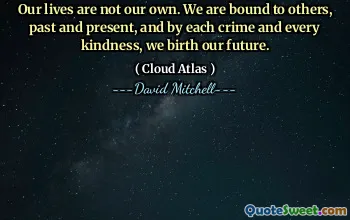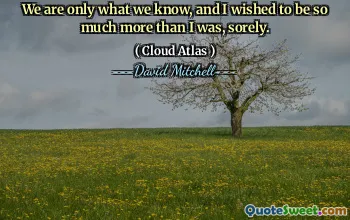
And although Margarita lived in a world that predated Technicolor, she always dreamed of the boy in rich pastels.
This evocative quote brings to mind the contrast between reality and imagination, and the longing for vibrancy and color in a subdued or bygone era. Margarita's world, described as one that predates Technicolor, alludes to a time when life could have been simpler, less vivid, or less expressive through the medium of color. Yet, her dreams paint a different picture—the boy in rich pastels—symbolizing hope, creativity, and a desire for beauty beyond the constraints of her environment. The phrase 'pre-dated Technicolor' — a revolutionary film process that introduced vibrant hues to cinema — metaphorically underscores how her environment might have been lacking in color and excitement, but her imagination compensates by bringing to life vivid images that defy her surroundings.
This juxtaposition emphasizes the human tendency to seek beauty and meaning beyond what is immediately accessible, using dreams and imagination as a form of escapism or aspirational aspiration. The boy, perhaps representing innocence, love, or idealism, dressed in rich pastels, hints at a longing for harmony, softness, and positivity amid more muted realities. The quote informs us about the innate resilience of human hopes, how they transcend physical or temporal limitations. It invites us to reflect on the power of imagination to fill in the gaps left by our environments, shaping a more colorful internal world.
Within the context of Salvador Plascencia’s 'The People of Paper,' the motif might symbolize how narratives, stories, and dreams form the vibrant fabric of our identities. Despite external conditions that may be dull or monochromatic, our inner worlds - fueled by imagination and aspiration - remain rich, colorful, and alive, providing a vital contrast that sustains hope and beauty in everyday life.








